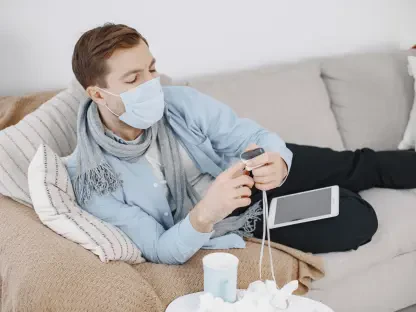In today’s fast-paced world, managing mental health often feels like an insurmountable challenge, especially when balancing countless daily responsibilities and unexpected pressures that arise from work, family, and personal goals. The constant demands can leave little room for self-care, leading to heightened stress and emotional fatigue. Yet, the reality is that enhancing mental well-being doesn’t have to involve expensive therapy or intricate wellness regimens. In recognition of global efforts to prioritize mental health, this article unveils straightforward, science-supported strategies that can be implemented immediately to alleviate stress and elevate mood. Mental health holds equal importance to physical health, as chronic stress can manifest in physical symptoms like elevated blood pressure, hormonal disruptions, and diminished energy levels. Experts emphasize that simple, intentional habits can create a profound impact, offering a pathway to a calmer, more balanced life for everyone, regardless of age or circumstance.
1. Engage in Cyclic Breathing Exercises
Breathing techniques have emerged as a powerful tool for mental health, with research highlighting their ability to transform stress responses. A notable study from Stanford Medicine, published in Cell Reports Medicine, explored the effects of various breathing exercises on 108 adults over 28 days. The findings revealed that just five minutes of daily cyclic sighing—also referred to as the “long exhale” method—significantly improved mood and reduced anxiety levels. Participants also experienced a lower resting respiratory rate over time, indicating a sustained calming effect on the body. Cyclic sighing stands out for its simplicity and accessibility, requiring no special equipment or extensive training. This method focuses on a controlled exhale that is longer than the inhale, fostering a sense of release. As a quick and effective stress-relief strategy, it can be practiced anywhere, making it an ideal addition to a busy routine for those seeking immediate mental clarity.
Understanding why cyclic sighing works involves looking at its physiological impact on the body. When lungs are fully expanded during deep breathing, the vagus nerve is activated, leading to a slower heart rate, reduced blood pressure, and an overall sense of calm, as explained by mindfulness expert Dr. Greg Hammer. Additionally, this process increases oxygen levels in the blood, enhancing overall health when practiced regularly. For many, stress leads to shallow breathing throughout the day, depriving the body of these benefits. To try this technique, follow these steps: Inhale slowly and deeply through the nose to nearly fill the lungs. Take a second, shorter breath through the nose to completely fill them. Then, exhale slowly and fully through the mouth with an audible sigh, allowing the shoulders to relax. Repeat this cycle of two inhales and one long exhale for several minutes. This practice offers a direct way to counteract stress and restore a sense of balance in moments of tension.
2. Maintain Proper Hydration
Hydration plays a surprisingly critical role in managing stress and supporting mental health, often overlooked in daily routines. A study published in the Journal of Applied Physiology found that individuals consuming higher amounts of water—approximately 4.4 liters daily—exhibited significantly lower cortisol levels after a stress test compared to those with an intake of just 1.3 liters. Cortisol, known as the stress hormone, can spike under pressure, exacerbating feelings of anxiety and exhaustion. This research suggests that adequate water intake helps the body respond more calmly to stressors, maintaining a balanced physiological state. Given that even mild dehydration can trigger a stress response, prioritizing hydration becomes a simple yet effective strategy for mental well-being. This approach requires minimal effort beyond keeping a water bottle handy and making a conscious effort to drink regularly throughout the day.
The mechanism behind hydration’s stress-reducing effects lies in how the body interprets dehydration as a threat, according to Dr. Jennifer Dragonette, a clinical services expert. When dehydrated, the body signals stress, prompting a rise in cortisol that can leave individuals feeling drained and overwhelmed. Staying well-hydrated ensures smoother bodily functions and keeps the stress response in check, reducing the likelihood of mental strain. As a general guideline, Dr. Hammer recommends aiming for 3 to 4 liters of water daily—roughly 12 to 17 cups—for women and men respectively, ensuring urine remains light and not overly concentrated. This benchmark can vary based on activity levels and climate, but it serves as a practical target. By integrating this habit, the body is better equipped to handle daily challenges, providing a foundation for improved mood and resilience against stress-induced fatigue.
3. Practice the ‘Butterfly Embrace’ Technique
Among innovative self-soothing methods, the “self-healing butterfly hug” has gained attention for its ability to reduce anxiety swiftly and effectively. Research published in the Journal of Nursing Practice demonstrated that participants practicing this technique for 30 minutes once a week reported significantly lower anxiety levels within just three weeks. This approach involves crossing the arms over the chest and tapping fingers on the upper arms or shoulders while engaging in slow, deep breathing. The simplicity of this method makes it accessible to anyone, regardless of setting or time constraints. It serves as an emotional reset, offering a way to manage stress in real-time, whether at home, work, or on the go. The butterfly embrace combines physical touch and rhythmic movement, creating a grounding experience that can interrupt cycles of panic or overwhelming thoughts with minimal effort.
The effectiveness of the butterfly embrace stems from its dual activation of physical and neurological calming mechanisms. Physical touch, even self-administered, signals safety to the brain, releasing oxytocin—a hormone associated with bonding and stress reduction—as noted by Dr. Dragonette. Simultaneously, the bilateral tapping on alternating sides engages the nervous system, reinforcing a sense of present-moment safety that contrasts with anxiety’s disorienting sensations. To practice this technique, cross the arms over the chest, resting hands on the upper arms or shoulders. Tap alternately with fingers on each side while taking slow, deep breaths. Continue for a few minutes as needed, anytime and anywhere. This method not only reduces immediate stress but also builds a sense of control, empowering individuals to navigate emotional challenges with a practical tool that fits seamlessly into daily life and supports long-term mental health.
4. Dedicate Time to ‘Pride Reflection’ Journaling
Journaling, a timeless practice, offers profound benefits for mental health when tailored to focus on positive self-reflection. Known as “pride practice,” this method involves setting aside a few minutes before bed to write down three achievements from the day, no matter how small. This exercise shifts attention from self-criticism to self-appreciation, fostering a healthier mindset. Dr. Dragonette highlights its particular impact for women over 50, who may often dwell on perceived shortcomings or unmet expectations. By documenting moments of pride, this practice counters negative thought patterns that fuel anxiety and depression. It serves as a reminder of personal strength and capability, reinforcing self-esteem with each entry. The simplicity of this strategy—requiring only a notebook and a quiet moment—makes it an accessible way to end the day on a positive note and build emotional resilience over time.
The protective power of pride reflection lies in its ability to enhance self-efficacy and combat low mood states. Regularly acknowledging personal successes, even minor ones, creates a buffer against the mental toll of stress and self-doubt, as supported by clinical insights. To engage in this practice, set aside a quiet moment before bedtime. Write down three things from the day that inspire a sense of pride, ensuring they vary each day to maintain freshness and engagement. This could range from completing a task to showing kindness to someone. The act of writing solidifies these positive reflections, making them more tangible and impactful. Over time, this habit cultivates a mindset focused on growth and achievement rather than regret, offering a sustainable way to improve mental health. Integrating this into nightly routines provides a consistent opportunity to reset emotionally and prepare for the challenges of the following day with renewed confidence.
5. Moving Forward with Mental Health Tools
Reflecting on the journey of mental health care, it becomes evident that small, intentional actions often yield the most significant results in reducing stress. The strategies explored—cyclic breathing, hydration, the butterfly embrace, and pride reflection journaling—prove to be accessible solutions that fit into everyday life without overwhelming time or resources. Each method offers a unique way to address emotional strain, demonstrating that mental well-being is within reach through consistent, simple practices. These approaches empower individuals to take control of their mental state, providing relief from pressures that once seemed unmanageable. The emphasis remains on practicality, ensuring that anyone can adopt these habits regardless of their circumstances or background, fostering a sense of hope and capability.
Looking ahead, the focus should shift to integrating these tools into long-term routines for sustained mental health benefits. Experimenting with each strategy to find the best personal fit can create a tailored approach to stress management. Combining techniques, such as pairing hydration with breathing exercises during breaks, may amplify their effects. It’s also vital to remain adaptable, adjusting practices as life’s demands evolve. Remember, this content is not a substitute for professional medical advice or diagnosis; consulting a physician before pursuing any new health plan is always recommended to ensure safety and appropriateness. By building on the foundation laid by these methods, the path to a calmer, more grounded existence becomes clearer, encouraging a proactive stance toward mental wellness that prioritizes balance and self-care in every season of life.









